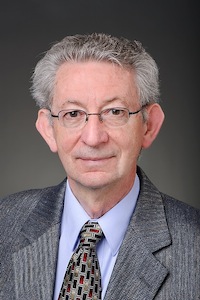Updated Statement by Chancellor Ward on UW Fund Balances
Interim Chancellor David Ward issued the following statement on Monday, May 6, 2013.
I have appreciated the discussion I have heard on campus regarding the fund balances carried by University of Wisconsin System schools. As I wrote in the April 25 email on this subject, the funds in these accounts are used to help UW–Madison succeed in its academic and research missions.

David Ward
I am following up to give you more specifics about the funds, and to clarify some points about them.
The fund balances are reported publicly each year in the state’s Comprehensive Annual Financial Report and the UW System’s Annual Financial Report. These reports present a snapshot of the balances at a specific time.
While the balances are listed in the reports, legislators have commented that the figures could be more visible and more detailed. UW System President Kevin Reilly and I agree, and we are working to develop a new policy for reporting these fund balances.
At the end of the 2011-12 fiscal year, the system’s fund balances totaled approximately $648 million, according to a report from the Legislative Fiscal Bureau. Of that amount, UW–Madison accounts for about $298 million when a number of accounts are added together. Most of these funds are already committed to projects across the campus, and a significant portion of the balance resides in accounts dispersed across the institution in schools, colleges and other units.
The largest share of our reserve balance – roughly $102 million – is in Fund 131, academic student fees. Roughly half of that balance is held centrally, and half within individual schools and colleges. More than half of the centrally held funding is dedicated to student financial aid for undergraduate students and serves as a bridge resource until we can raise enough charitable contributions to meet our financial aid obligations.
Irrespective of this explanation of financial aid, it is certainly appropriate to have a review process of our tuition policy that takes into account any reserves and to make sure our expenditures remain squarely focused on student outcomes.
Another category, Fund 136, consists of self-supporting operations that are aligned with our primary missions – instruction, research and public service. As of the report, the balance of this fund was approximately $51 million.
The resources in Fund 136 are generated by self-supporting operations in colleges and schools on campus, and are dispersed in well over 500 individual accounts. They pay for operations that range from relatively small expenditures (such as key deposits, copy room chargebacks, chemistry storerooms, music equipment rentals) to large (such as the Wisconsin Center for Education Research, the College of Letters & Science Survey Center, the School of Veterinary Medicine Teaching Hospital, and the Babcock Dairy Plant).
“Given the fiscal uncertainty of the last several years, these policies have been how we have kept our institution on course. Our aim is to operate a stable enterprise that is less vulnerable to fiscal turbulence…”
David Ward
Overall, compared to peer institutions, the amounts we hold in reserve are relatively small. The National Association of College and University Business Officers recommends a reserve level of 40 percent. Our reserve ratio is less than 25 percent of our annual budget.
Some have questioned why the balances have not been used to address the compensation challenges our faculty and staff have faced in recent years. Under state law, UW System institutions do not have the authority to approve a pay plan for employees. Under the current model, the Board of Regents submits a plan recommendation to the Office of State Employment Relations, which brings its recommendation to the legislature’s Joint Committee on Employment Relations (JCOER) for approval.
Also, salary increases must be funded year-over-year and one-time money, such as the fund balances, is not available on a continuing basis to support payroll expenditures.
Governor Walker’s 2013-15 budget proposed flexibilities for addressing the pay plan approval and salary issues, but those provisions are frankly in jeopardy given legislative concerns raised over the management of the fund balances. However, we are working with the governor’s office and legislators to keep those flexibilities intact.
It must be noted that the ongoing sequestration process threatens a major UW–Madison funding stream, federal grants. According to estimates, the university could lose tens of millions of dollars of our federal funding if the sequester continues. This is obviously a concern we are following closely, and is precisely one of the reasons for keeping fund balances.
In addition, there is the continuing uncertainty of our state funding level. Between 2001-02 and 2011-12, GPR funding for the UW System has remained flat as costs continue to increase. We have made up the loss in state funding by expanding other revenue streams. Carrying forward balances allows us to advance institutional priorities and maintain quality services.
Given the fiscal uncertainty of the last several years, these policies have been how we have kept our institution on course. Our aim is to operate a stable enterprise that is less vulnerable to fiscal turbulence in order to provide our students with a quality education, our researchers the funds necessary to continue to innovate and foster economic development, and our employees a stable workplace where they can focus on the academic mission that defines why we are here.
Tags: state budget



